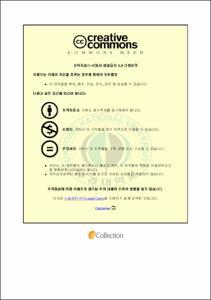대황 (Eisenia bicyclis) 추출물의 생리활성과 응용
- Alternative Title
- Biofunctional Properties and Application of Eisenia bicyclis Extracts
- Abstract
- 본 연구에서는 갈조 식물 해조류인 대황을 유용하게 이용하기 위하여 대황을 여러 가지 용매를 이용하여 추출한 추출물을 가지고 생리 기능성 활성을 알아보았다. 대황의 총 페놀 함량을 측정 하였으며 DPPH-radical scavenging activity 측정, methyl mercaptan 구취억제 활성, 아질산염 분해 작용, 구취억제 소재 제조시 온도, pH, 시간의 영향을 알아보았다.
총 페놀함량은 ethyl acetate 추출물이 12.51 ㎎/100 g 으로 가장 높게 나타났고 ethanol 추출물은 8.37 ㎎/100 g, water 추출물은 3.13 ㎎/100 g의로 나타났다. 추출물별 전자 공여능 측정결과 ethyl acetate 추출물이 90%로 가장 높은 결과를 나타내었으며 ethanol, water 추출물도 각각 87%, 64%의 결과를 나타내었다. 추출물별 구취억제 활성을 측정한 결과 ethyl acetate 추출물이 97%로 구취억제 활성이 가장 높았으며 ethanol 추출물도 95%의 구취억제 활성을 나타내었다. 이상의 결과로서 페놀성 물질은 ethyl acetate 용매에 잘 이행되는 성질을 가지고 있으며 구취억제 효과를 나타내는 물질도 페놀성 물질일 것으로 추정된다.
아질산염 분해 작용은 ethyl acetate 추출물이 농도 1%일때 pH 1.2 구간에서 가장 높은 86%의 분해율을 나타내었고, ethanol 추출물은 76%, water 추출물은 37%의 분해율을 나타내었다. 또한 아질산염 분해율은 농도가 높을수록, pH가 낮을수록 높은 분해율을 나타내었다.
구취억제 소재 제조시 온도에 대한 구취억제 활성은 30℃에서 가장 높은 84%의 구취억제 활성을 나타내었다가 40℃에서 부터는 60% 이하의 결과를 나타내었다. 또한 구취억제 소재 제조시 pH에 대한 구취억제 활성은 산성구간에서는 20% 이 하의 낮은 구취억제 활성을 나타내다가 pH7.5 이상에서는 80%의 높은 구취억제 활성을 나타내었다. 구취억제 소재 제조시 24시간 이내에 이루어 졌을 때 90% 이상의 높은 구취억제 활성을 나타내었으며 48시간 이후에는 점차 감소는 경향을 나타내었다. 구취억제 소재를 제조시 손실을 최소화하기 위해서는 24시간 이내에 pH 7.5 이상에서 30℃ 이하에서 제조하는 것이 좋을 것으로 판단된다.
대황의 추출물을 0.5% 첨가하여 만든 젤리식품도 methyl mercaptan 억제효과는 대조구와 비교 하였을 때 약 2.5배 우수한 것으로 나타났다.
시중에 판매되고 있는 젤리의 응집력은 245 kPa, 겔 강도는 212 kPa, 탄력성은 53%였다. 이와 가장 유사한 응집력을 가진 젤리를 만들기 위해서는 올리고당의 농도를 60%, 젤라틴의 농도를 8%, 한천의 농도를 2%로 하여 젤리를 제조하는 것이 가장 유사한 젤리를 만들 수 있다.
This study examined biofunctional properties of brown sea weed (Eisenia bicyclis) extracts which were extracted with various solvents, in order to suggest a way how to effectively extract the bioactive ingredients from Eisenia bicyclis. For measuring the biofunctional activities of Eisenia bicyclis extracts, total phenol content, electron donating ability, deodorizing activity against methyl mercaptan, and nitrite scavenging abilities of the extracts, as well as the effects of temperature, pH level, and time on jelly processing of halitosis inhibition were examined.
The total phenol content was found to be the highest amount in ethyl acetate extract at 12.51㎎/100g, with ethanol extract at 8.37㎎/100g and water extract at 3.13㎎/100g. The measurements of electron-donating ability by the extracts revealed that ethyl acetate extract ranked top at 90%, followed by ethanol and water extracts at 87% and 64%, respectively. The results of halitosis inhibition by the extracts showed that halitosis inhibition of ethyl acetate extract showed the highest activity at 97%, with the ethanol extract having 95% of halitosis inhibition. These findings imply that phenol substances are easy to react with ethyl acetate solvents, and that the substances for halitosis inhibition can be considered as phenolic compounds.
As far as nitrite-scavenging abilities were concerned, ethyl acetate extract at 1% concentration showed the highest level of 86% in the section of pH 1.2, with ethanol extract remaining at 76% and water extract at 37%. In addition, nitrite-scavenging level increased as the concentration increased and as the pH level decreased.
Deodorizing activity on temperature changes showed the highest activity at 30℃, or, 84%, down from 40℃ to 60% or below. In the case of pH level, halitosis-inhibiting activity was low at 20% or below in the acid section, and increased to 80% at pH7.5 or higher. When the halitosis-inhibiting ingredient was made within 24 hours, the halitosis inhibition became higher at 90% or over, and tended to decrease gradually after 48 hours. To minimize the loss of halitosis inhibition, it is desirable to make a halitosis-inhibiting product within 24 hours, at pH7.5 or over, and at 30℃ or below.
A jelly food product containing 0.5% of Eisenia bicyclis extract was 2.5 times more effective than the control group, in the measurement of the reduced amount of methyl mercaptan above the headspace of sample.
- Issued Date
- 2009
- Awarded Date
- 2009. 2
- Type
- Dissertation
- Publisher
- 부경대학교 대학원
- Alternative Author(s)
- Kim, Dae-Yong
- Affiliation
- 부경대학교 대학원
- Department
- 대학원 식품공학과
- Advisor
- 김선봉
- Table Of Contents
- 서론 = 1
재료 및 방법 = 5
1. 실험재료 = 5
1.1 시료 = 5
1.2 사용시약 = 5
1.3 완충액 제조 = 5
1.4 대황 추출물의 제조 = 5
2. 실험방법 = 6
2.1 Methyl mercaptan 표준액 제조 = 6
2.2 구취억제활성 측정 = 6
2.3 총 페놀 정량 = 9
2.4 DPPH radical-scavenging activity의 측정 = 9
2.5 아질산염 분해 작용 측정 = 10
2.6 온도, pH 및 시간에 따른 구취억제 활성의 영향 = 12
2.7 젤리의 제조 = 12
2.8 물성측정 = 12
2.9 통계분석 = 13
결과 및 고찰 = 14
3.1 대황 추출물의 구취억제 활성 = 14
3.2 추출 용매에 따른 구취억제활성 및 수율 = 14
3.3 총 페놀 함량 = 17
3.4 DPPH radical-scavenging activity의 측정 = 17
3.5 아질산염 분해 작용 = 20
3.6 구취억제 소재 제조시 미치는 영향인자 특성 = 20
3.6.1 온도 영향 = 20
3.6.2 pH 영향 = 25
3.6.3 반응시간의 영향 = 25
3.7 젤리식품의 구취억제 활성 = 27
3.8 물성 측정 = 30
3.8.1 Cohesiveness = 30
3.8.2 Gel strength = 30
3.8.3 Springiness = 37
요약 = 41
참고문헌 = 43
감사의 글 = 49
- Degree
- Master
- Files in This Item:
-
-
Download
 대황 (Eisenia bicyclis) 추출물의 생리활성과 응용.pdf
기타 데이터 / 698.16 kB / Adobe PDF
대황 (Eisenia bicyclis) 추출물의 생리활성과 응용.pdf
기타 데이터 / 698.16 kB / Adobe PDF
-
Items in Repository are protected by copyright, with all rights reserved, unless otherwise indicated.